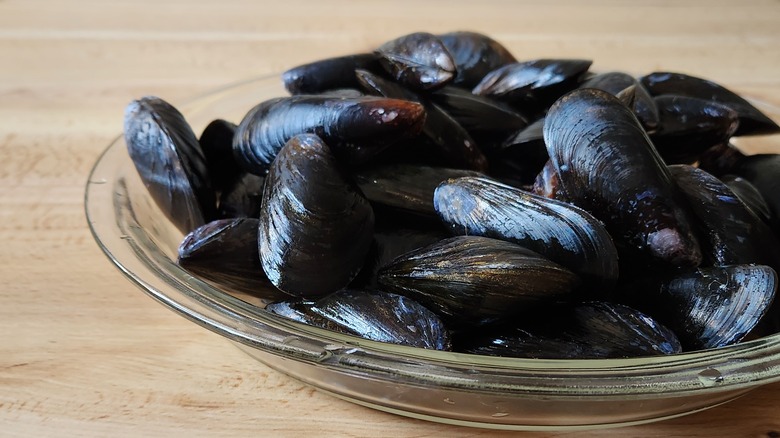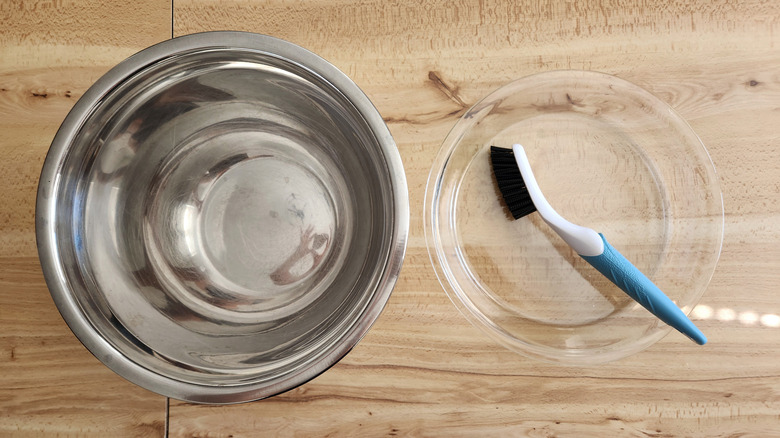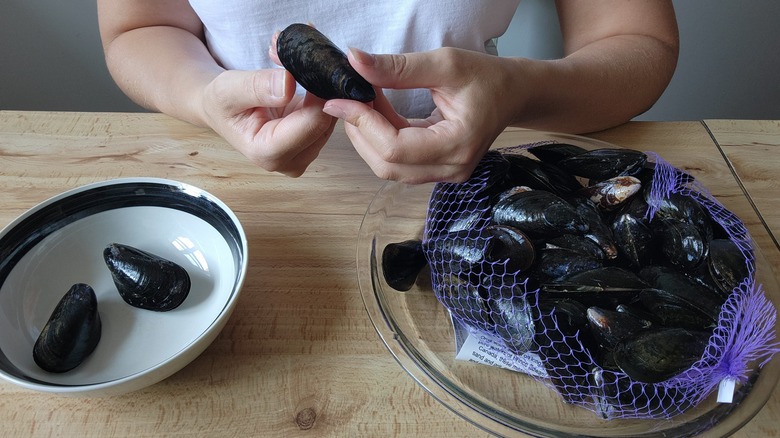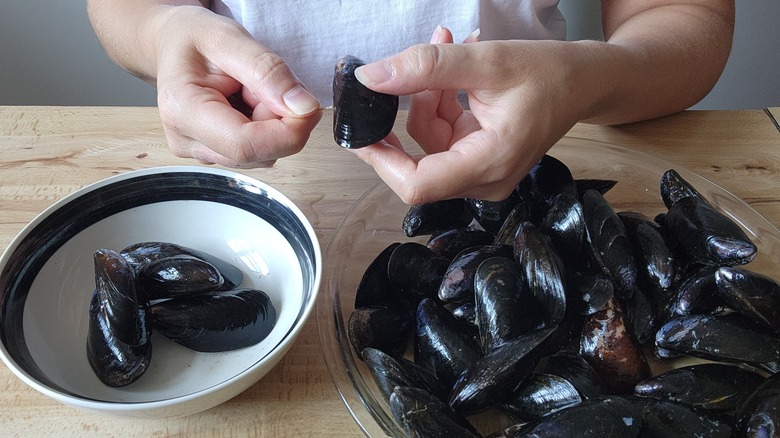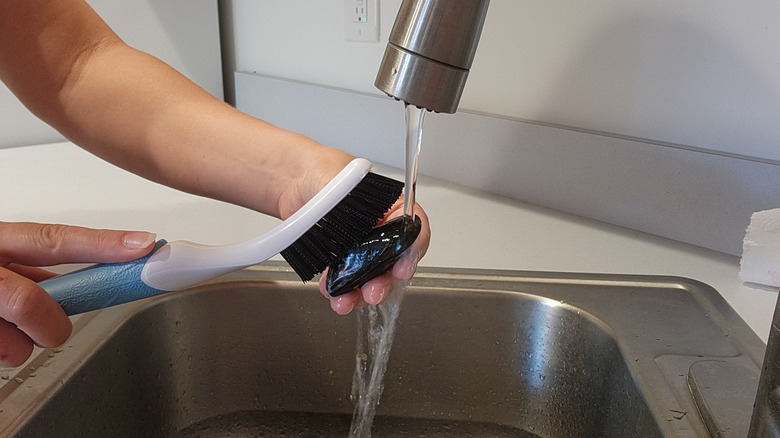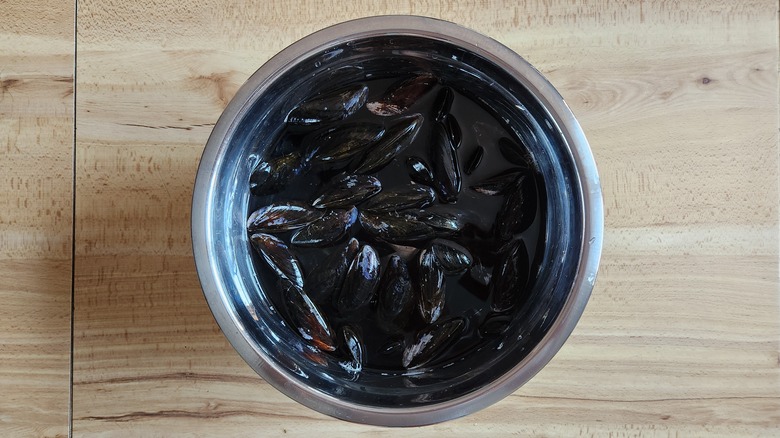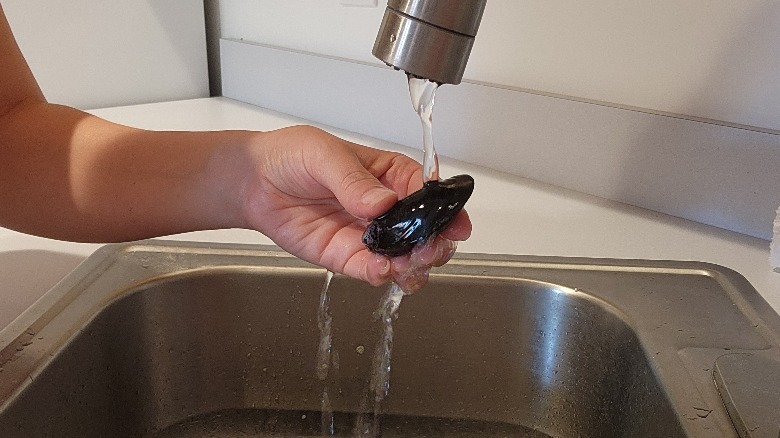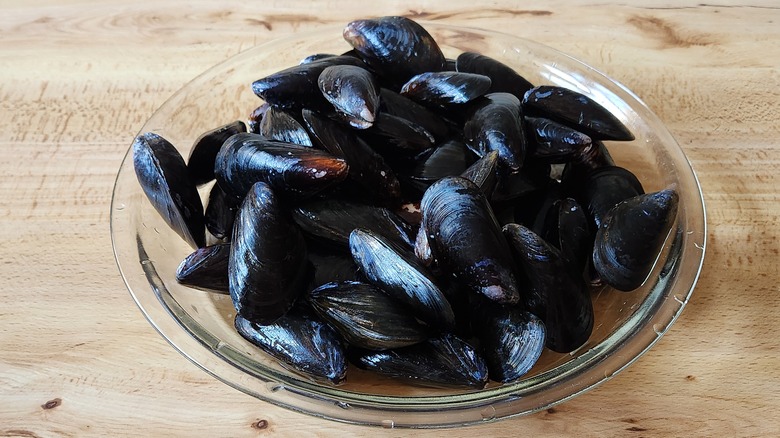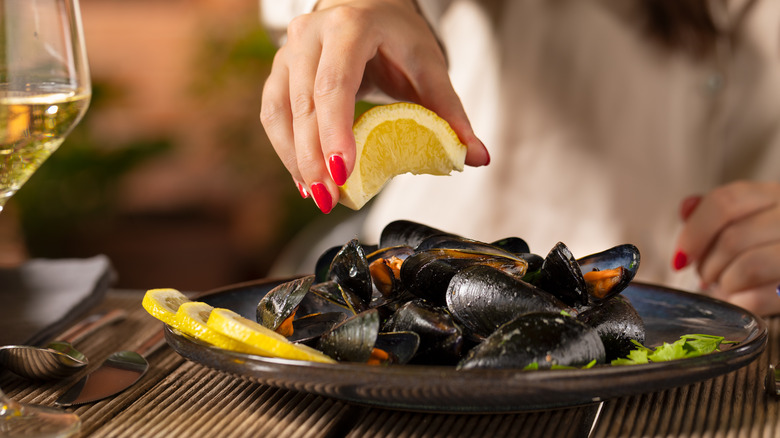How To Clean Mussels Perfectly Every Time
Seasoned seafood cooks know that, despite their somewhat unattractive appearance inside their shells, mussels are a delicious treat that is quick to prepare and has a flavor that easily shines without complicated recipes. Some people enjoy dining out on mussels but may feel intimidated by the thought of preparing them at home. Mussels can look a bit wild when they're still at the market as they may be covered in grit and barnacles. However, the cleaning process is pretty straightforward.
Avoid common mistakes when buying seafood such as mussels by choosing a seafood market carefully. A reputable market will be known for selling fresh, high-quality seafood, from local waters if possible. The best season to choose wild mussels is from September to April for the richest flavor, or buy farmed mussels at any time.
Mussels spoil quickly, which is why they're sold and cooked live. Live mussels have tightly closed shells, so check that all or most of them are closed before choosing a bag. Mussels need to stay cold and moist to breathe, so, after purchasing, store them unwrapped in the refrigerator until you're ready to clean them. Don't submerge them in water. It's best to buy mussels the same day you'll make them if possible, or no more than 24 hours ahead.
If you're tempted to skip the cleaning process, don't. Mussels accumulate gritty particles or contaminants on their shells as well as inside since they filter water to feed, and the shells will often be present in the pot when you're cooking the dish. Following these steps will help you learn to clean mussels quickly and effectively in no time so you start making restaurant-quality mussel dishes from the comfort of your own home.
Tools you'll need for cleaning mussels
You don't need a lot of equipment to clean mussels. A firm brush, a large bowl, and a large clean dish will suffice. You can use a kitchen towel and a paring knife during the cleaning process if you like, but they're optional. The same goes for the ingredients. Besides the mussels, you'll only need some salt.
Inspect the mussels
Sometimes you may be ready to clean the mussels as soon as you arrive home from the market, and other times the mussels may sit in the fridge for a few hours or even overnight until it's time to start cooking. Either way, the first step of the cleaning process is to inspect the mussels and sort the live ones from any dead ones.
Open the bag and take the mussels out one by one. Set aside all the closed mussels and discard any with broken shells. Give any mussel with an open shell a couple of light taps on the counter. If the mussel closes, it's still alive and you can keep it. Give it a minute to close if it doesn't do so right away.
Debeard the mussels
The tough bundle of dark-colored fibrous threads sticking out of one side of the mussel shells is known as the beard, or more officially, the byssal threads. These threads are present in many species of mollusk and serve to attach the individual to a solid surface like a rock. While they won't do any damage if you eat them, they're not appetizing and are best removed. It's not that hard to debeard a mussel, but you'll need to give it a firm yank.
Working with one mussel at a time, hold the shell in your non-dominant hand and grasp the beard with your dominant hand. With a quick, decisive motion, tug the beard just slightly back and forth while pulling out on it at the same time. You can cover your hand with a kitchen towel before you grasp the beard if you're having trouble keeping hold of it.
Scrub and rinse the mussels
Once the beards have been removed, scrub the outside of the shells with a firm brush under the tap to remove any debris and rinse the shells. You can use a paring knife to carefully remove any stuck-on barnacles if you like, but it's also okay to leave them on.
Soak the mussels
After rinsing, place the mussels in a large bowl of cold water mixed with a few tablespoons of salt and let them soak for 20 minutes. As the mussels breathe, any remaining sand and debris will fall to the bottom of the bowl. Soaking is optional for farmed mussels, which are the majority of the mussels on the market. These contain fewer particles because they are held in moving water at the end of the farming process. However, if you purchase wild mussels, soaking is helpful so you don't end up with a gritty mouthful once you're eating.
After the 20 minutes have elapsed, remove the mussels from the water one at a time and give them a final quick rinse under the tap to remove extra salt from the water. Place them on a clean dish until you're ready to cook them. Make sure you pick the mussels out of the bowl of water by hand, rather than tilting the bowl to empty it, or the sand can reenter the shells.
How long do cleaned mussels last?
You can leave some other kinds of raw seafood in the refrigerator for a day or two, but don't do that with cleaned mussels. Mussels spoil quickly, and an unpleasant odor can quickly overtake your refrigerator. Mussels are best eaten fresh for both flavor and safety reasons. Plan ahead to be ready to cook them immediately after cleaning. If there's going to be a short delay, put them back in the refrigerator covered with a damp paper towel in the meantime, and check that they're still closed before putting them in the cooking pot.
Recipes featuring mussels
If your mussels are nice and fresh, they don't need fancy ingredients to taste delicious. The important thing to keep in mind is to not overcook them. A quick way to enjoy this popular shellfish as an appetizer or main dish is pan steaming — and it only takes five minutes. You need olive oil, garlic, and parsley for a simple version, but you can add other ingredients like butter, white wine, and peperoncino if desired. The French dish moules frites, made with a generous quantity of butter and served with French fries, is one take on this method. For a creamy garlicky steamed mussel dish, add heavy cream and include lots of garlic. You can also add tomato puree for a red version and keep the rest of the ingredients the same. Make sure there's plenty of liquid in your steamed mussel recipe and soak up that rich, flavorful goodness with crusty bread or serve over pasta.
Mussels are eaten in many countries around the world, and different cuisines prepare them in special ways. An Italian seafood risotto or a Spanish seafood paella are two tasty ways to prepare mussels. French bouillabaisse and other kinds of shellfish stews are worth learning to make at home. For added flavor, mussels can be used in curries like in this coconut curry mussels recipe, which features flavors like ginger, coconut milk, chili peppers, and cilantro. Finally, consider trying some creative way of serving mussels such as mussels escabeche, inspired by Basque cooking, roasted mussels, and even spicy pickled mussels with Asian flavors.
